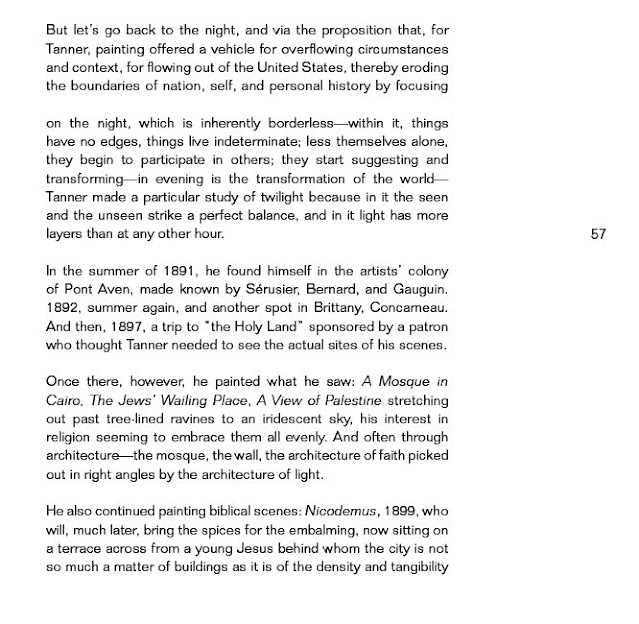Jennifer K Dick’s introductory comments for Cole Swensen’s ART IN TIME (Nightboat Books, May 2021)
A zoom event in June 2021 co-organized by Eléna Rivera, Laura Mullen and Jennifer K Dick
Essai: Montaigne: Try
Poetry: Art: Land: Stop Time: Move on: Glimpse: Halt: Retreat: Examine: Light: Grass: Field: Sky: Tend Histories: Groom Recollection: Filter: Wait: Grow: Decipher:
Misreading one of Swensen’s lines in Art in Time, I discovered myself thinking “It’s a gesture of pure rapture—” in lieu of “rupture”. I found that misreading moment to be defining something about my own encounter with this new work, as
“…the face of the filmer breaking
open the surface of the fiction—” (25)
was suddenly no longer the “rupture” of Vargas, but the rapture, the joy of light, of enlightening, of being enlightened—and sharing that—that is Swensen here in this book.
Swensen associates writing with seeing, seeing with being expanding beyond the breadth and depth of the spatio-temporal realm (I think of Goest, or the pondering of “vastness” with which she opens Art in Time). To stretch beyond, within : like the short essay-videopoem we showed here to launch into this evening (online at: https://vimeo.com/509444600, the third section is the one by Swensen we showed), walking down the road towards the vanishing point which is never attained, always stretched out towards. To get to it? Into it/(intuit)? Go beyond it? The limitlessness of possibility. Lines, in Swensen’s work, thus extend, but then a wind comes up, some distraction, and the focus disperses. Are these poems constantly trying to stick to the solid road, the manageable, cultivated field, the uniformly, nicely blocked essay, the art critical—like in this extract on Tanner who Swensen notes was painting “the architecture of faith picked / out in right angles by the architecture of light” ?
Like an insect, a flower, a leaf, dust in a gust of wind causing us to pause then wander off, free to explore the spirit of something encountered, poetic fragments float through these texts, break away from thought to sense (tactility) and to sensing (knowing, feeling, suspecting an idea to be an accurate rendition) through and beyond—like Tanner’s :
From Extract from Henry Ossawa Tanner
Night Over Night, p57
I draw your attention especially to this moment:
night, which is inherently borderless—within it, things
have no edges, things live indeterminate; less themselves alone,
they begin to participate in others; they start suggesting and
transforming—in evening is the transformation of the world—
Writes Swensen. Or, as she writes in another poem from this collection— “Field: a flag of erasure one life becomes another”(5)
Landscape with street on which wind—
in which women lean in—
Landscape of a line of lights
down a street in a storm.
Landscape of a woman
holding up a lamp.
Landscape of a woman
succumbing to light.
Of a woman with weather streaked in stone.
Landscape of a woman
on a balcony hanging out a sheet.
A woman walks up the quai with a basket of laundry on her head.
Another woman resting
against the blade of her scythe.
Suddenly we are transformed and transforming. We are in community, communing with moments, Like Swensen, like the artists Swensen is writing about. We, as readers, find ourselves in constant encounter. Not with Swensen alone, but, through Swensen, through her focus, her distractions, her wandering, her returning to find her point, with the others she is writing us into the room with: Agnes Martin, Robert Smithson, Agnès Varda, Rosa Bonheur, Willem de Kooning, Zao Wu-Ki, André des Gashons, Sally Mann, Irving Petlin, but also, through them, into their lives and encounters with others—we are there with Brassai, as Swensen writes:
“We see
Agnès V.
setting up a camera
on a black and white street
to take a photo of Brassai from several different heights” (23)
Swensen takes us into the work of Zao Wu-Ki, so that we, too,
“collaborate
with
some of the greatest
poets of his time—René Char, Saint-John
Perse, Ezra Pound,
Roger Laporte,
and earlier ones:
Rimbaud
Rimbaud, and Rimbaud
and always, in
endless conversation, Henri Michaux.”
For, as Swensen writes in that poem, in that moment
“It’s through
friendship that abstraction can acquire a density
sufficient to amount
to matter. To become material.
We, in fact, through the joy of reading these texts, of pausing a while in their light, feel the rapture—to return to my misreading—of communion as
“They (as Swensen say’s of Michaux’s ideogrammed thousands silhouetted along the horizon) “become fast friends.”
Tonight, Elena, Laura and I wanted to honor our close friend, ZOOM partner, and amazing author, publisher and translator. We want to celebrate this wonderful work with her because she has not only brought richness and encounter into our lives as a writer, but through her generosity of spirit, and—to end with a little laugh and a photo (not included for privacy reasons here) from when we could all gather in a physically shared space, a picture she has never even seen from an evening of sharing a galette des rois with friends—she has taught us to see both outwards and inwards at once in a manner that is constantly striving to go beyond and which Art in Time beautifully encapsulates. Here we locate
Landscape as history
as a trajectory perpendicular to memory
Landscape of history
as a long row of rooms
These pages, these poem-essays are rooms we get to enter. In which we get to find ourselves, together, as now as she will read to us.
TO ORDER A COPY OF ART IN TIME, go to NIGHTBOAT BOOKS at https://nightboat.org/book/art-in-time/*


